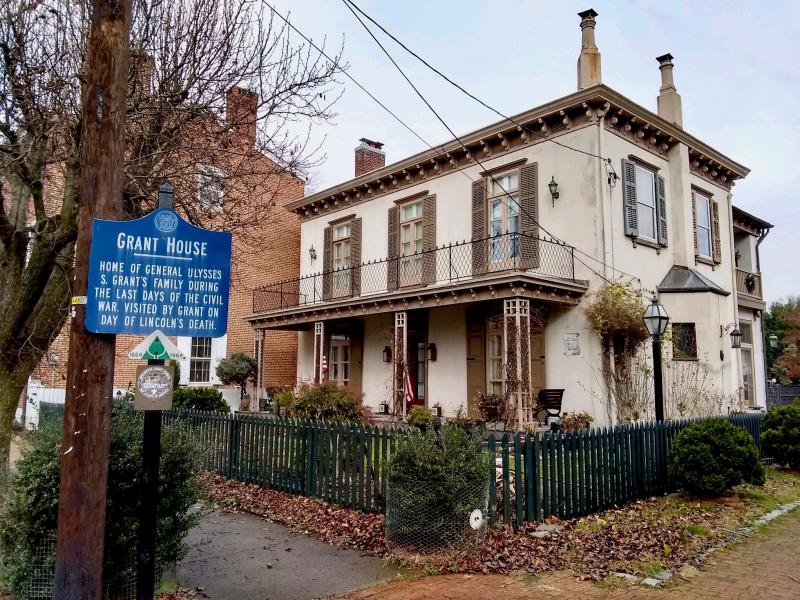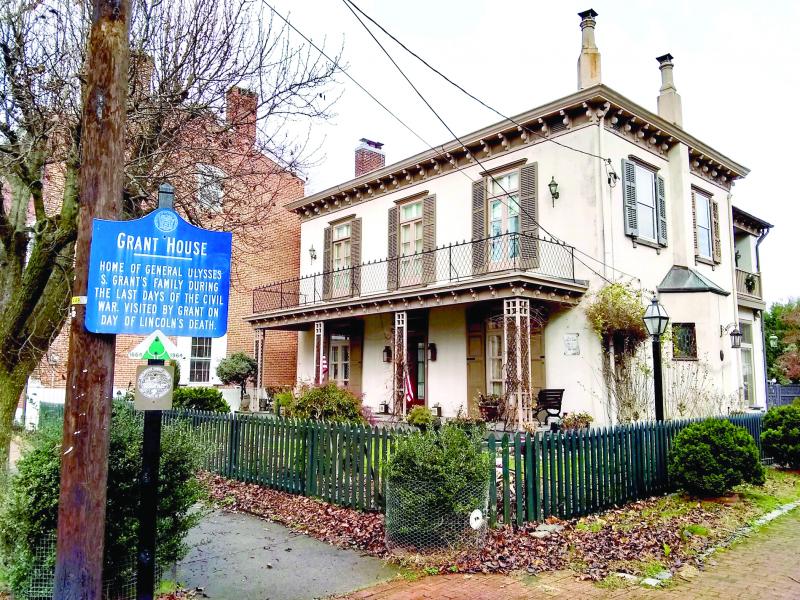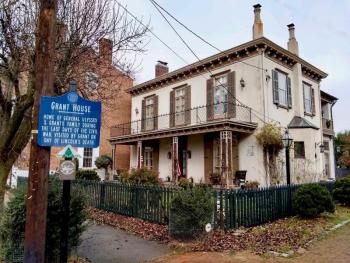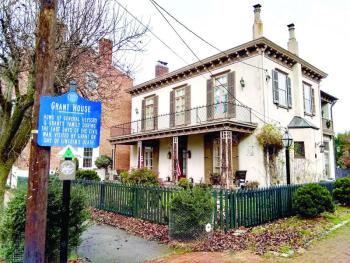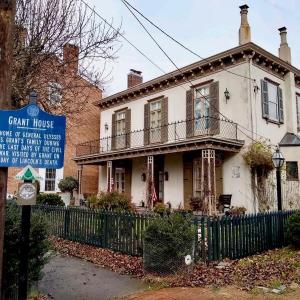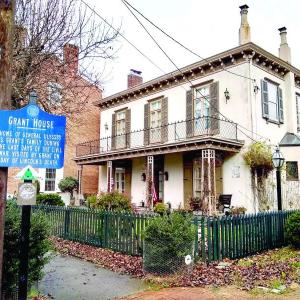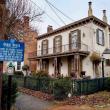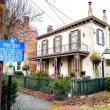The U.S. Grant House and Grant’s Wiscasset stop
During the holiday break, I spent one afternoon visiting Burlington in Burlington County, New Jersey. Settled by Quakers in 1677, Burlington is located on the shores of the Delaware River across from Bristol, Pennsylvania, the town made famous by the 1960s rock ’n roll dance song, “The Bristol Stomp.” Burlington’s original business district, which is not far from the riverfront, has many two-story brick buildings. Somewhat like Wiscasset, the downtown retains much of its 19th century look and charm, as do many homes surrounding it.
This includes one Federal-style house where Gen. Ulysses S. Grant once hung his hat. That’s right Grant himself, hero of the American Civil War, and our 18th president, whose picture is on the $50 bill. So, while my wife and two sisters were exploring the downtown shops, I quietly slipped away to have a look at the “Grant House.”
Before I get too far along, for the benefit of my editor Ms. Johns, there’s a Wiscasset connection to Grant. In my first book of Wiscasset stories, I retold the story of when President Grant stopped in Wiscasset one rainy morning in August 1873. Grant was vacationing in Maine at the invitation of the honorable James G. Blaine, who at the time was serving as Speaker of the U.S. House of Representatives. President Grant’s train stopped at Brunswick, Bath, Augusta and a number of small towns including Wiscasset, Richmond, Thomaston and other train stations along the Knox & Lincoln Railroad. These were basically just whistle stops, a pause by the locomotive just long enough for the President to acknowledge the crowds that had gathered to see him as he stood and waved from the rear of the car.
Traveling with Grant were Nellie, his 17-year old daughter, and her younger brothers, Ulysses Jr. and Jesse. A number of dignitaries went along for the ride aboard a custom-made, luxury Pullman car equipped with dining and sleeping accommodations along with all the latest conveniences of the day.
The Grant House in Burlington is a five-minute walk from the pharmacy on High Street. You follow West Union Street past the city’s historic stone library to Wood Street on the left. A short distance from the corner is a small blue sign identifying the handsome two-story home as the place where Gen. Grant’s family was living during the closing days of the Civil War. The sign says the famous general visited here briefly on the day Lincoln was assassinated. As the story goes, Grant wanted a quiet place for his family to live and the home in Burlington proved a suitable place. The general leased the spacious house but circumstances of the war prevented him from spending all but a few days here.
As the story goes, on April 14, 1865, the day President Lincoln was shot, General Grant was planning to spend a quiet evening with his family in Burlington. Earlier the general had politely but firmly declined an invitation from the President to spend the evening with him and the First Lady at Ford’s Theater. Instead Grant had made the trip by train from the Capital to Philadelphia, where his wife Julia met him at the station. The Grants were dining out when they learned President Lincoln had been shot. After escorting his wife home Grant returned by ferryboat from Burlington to Philadelphia and boarded the next train bound for Washington.
The cream-colored Grant House is stucco with tan wooden shutters. Comparing it to a photograph on file with the Library of Congress, it looks much the same as it did in the early 19th century, with its unique second floor balcony over the front porch and decorative iron fencing around it. One story told is that General Grant stood on this very balcony announcing to his neighbors President Lincoln had been shot. The Grant House is the only single-family home in the immediate neighborhood tucked as it is between period brick townhouses fronting the sidewalks. It’s not a museum but privately owned and has been since the time when the Grant family occupied it.
As I mentioned earlier, President Grant’s visit to Wiscasset and the Midcoast was a short one. Joseph Wood, editor of Wiscasset’s weekly newspaper, “The Seaside Oracle,” reported in his Saturday, Aug. 16, 1873 edition the Presidential Train had arrived from Bath precisely at 11:10 a.m. “The crowd gazed intently at him for a moment or two and gave three cheers as the train moved off,” wrote the young editor. It may surprise you to learn Wood’s report appeared not on page one of his newspaper but at the bottom of page three included among a column of local news.
Grant’s train eventually made its way to Rockland where the president was scheduled to board a steamer to Mount Desert Island. By all accounts the day weather-wise was a murky one – gray skies, drizzling rain and patchy fog. Despite the weather the newspapers reported crowds gathered at each stop to greet President Grant with enthusiastic cheers.
Phil Di Vece earned a B.A. in journalism studies from Colorado State University and an M.A. in journalism at the University of South Florida. He is the author of three Wiscasset books and is a frequent news contributor to the Wiscasset Newspaper and Boothbay Register. He resides in Wiscasset. Contact him at pdivece@roadrunner.com


